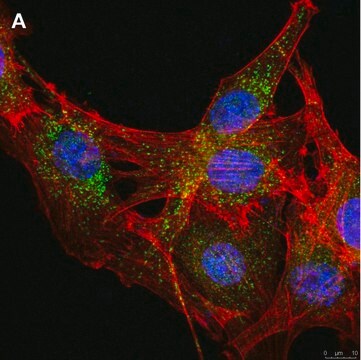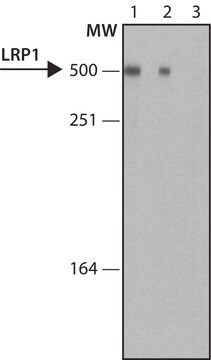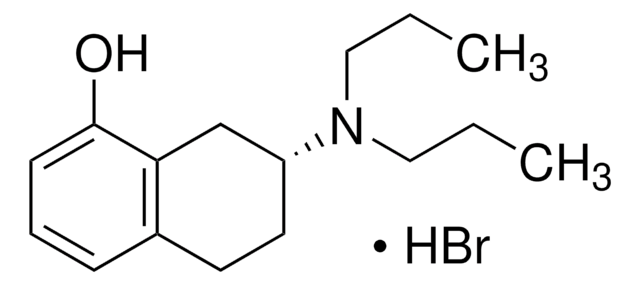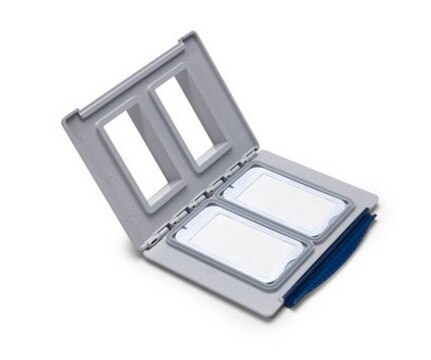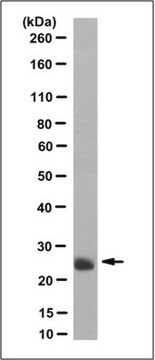MABN1796
Anti-LRP1 Antibody, 85 kDa subunit Antibody, clone 6F8
clone 6F8, from mouse
Synonim(y):
Prolow-density lipoprotein receptor-related protein 1, A2MR, Alpha-2-macroglobulin receptor, APER, Apolipoprotein E receptor, CD19, Low-density lipoprotein receptor-related protein 1 85 kDa subunit, LRP-85
About This Item
Polecane produkty
pochodzenie biologiczne
mouse
Poziom jakości
forma przeciwciała
purified immunoglobulin
rodzaj przeciwciała
primary antibodies
klon
6F8, monoclonal
reaktywność gatunkowa
human, mouse
metody
ELISA: suitable
western blot: suitable
izotyp
IgG1κ
numer dostępu NCBI
Warunki transportu
ambient
docelowa modyfikacja potranslacyjna
unmodified
informacje o genach
human ... LRP1(4035)
Opis ogólny
Specyficzność
Immunogen
Zastosowanie
Neuroscience
ELISA Analysis: A representative lot was employed as the capture antibody for the detection of LRP1 in different human brain regions by sandwich ELISA. a strong positive correlation between LRP1 and PSD95 regional distribution was observed (Shinohara, M., et al. (2013). Acta Neuropathol. 125(4):535-547).
Western Blotting Analysis: A representative lot detected siRNA-mediated LRP1 knockdown in human brain vascular pericytes (Casey, C.S., et al. 2015. J. Biol. Chem. 290(22):14208-14217).
Note: The use of 5% skim milk as the blocking agent and 1-2 hr instead of overnight primary incubation time is recommended for Western blotting application to minimize non-specific background.
Jakość
Western Blotting Analysis: 0.5 µg/mL of this antibody detected LRP1 85 kDa subunit in 10 µg of mouse whole brain tissue lysate.
Opis wartości docelowych
Postać fizyczna
Przechowywanie i stabilność
Inne uwagi
Oświadczenie o zrzeczeniu się odpowiedzialności
Nie możesz znaleźć właściwego produktu?
Wypróbuj nasz Narzędzie selektora produktów.
polecane
Kod klasy składowania
12 - Non Combustible Liquids
Klasa zagrożenia wodnego (WGK)
WGK 1
Temperatura zapłonu (°F)
Not applicable
Temperatura zapłonu (°C)
Not applicable
Certyfikaty analizy (CoA)
Poszukaj Certyfikaty analizy (CoA), wpisując numer partii/serii produktów. Numery serii i partii można znaleźć na etykiecie produktu po słowach „seria” lub „partia”.
Masz już ten produkt?
Dokumenty związane z niedawno zakupionymi produktami zostały zamieszczone w Bibliotece dokumentów.
Nasz zespół naukowców ma doświadczenie we wszystkich obszarach badań, w tym w naukach przyrodniczych, materiałoznawstwie, syntezie chemicznej, chromatografii, analityce i wielu innych dziedzinach.
Skontaktuj się z zespołem ds. pomocy technicznej